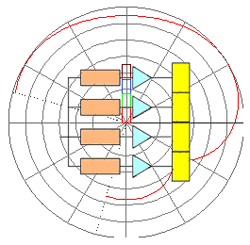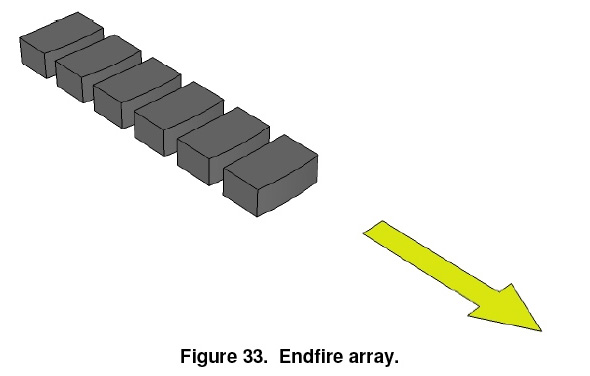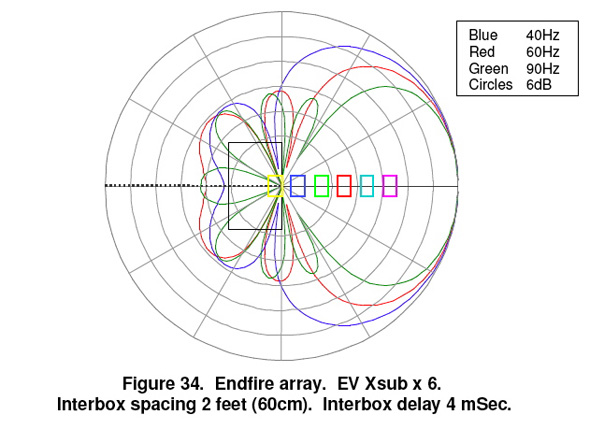
Large Central Clusters
Although large central woofer line arrays tend to provide excellent sound on their own, they can still benefit from gradient techniques in shows that do not require 360° subbass coverage.
In such shows, implementing the woofer cluster as a gradient line array means that less bass energy is radiated into the reverberant field. The result is a clearer subbass experience, with more definition, impact, and sense of pitch.
According to acoustic theory, using gradient woofers will reduce reverberant subbass energy by 4 to 6 dB, compared to omnidirectional woofers.
Delay Clusters
In large venues, especially outdoor stadiums and fields, the use of delay clusters is common for augmenting sound level and quality in the more distant listening positions.
The primary purpose of these clusters is to boost high-frequency level, to offset the air’s relatively high absorption of high-frequency energy. However, it is sometimes necessary for the delay clusters to provide additional low-frequency energy as well. In these cases, conventional loudspeakers pose a problem.
At low frequencies, normal delay clusters will be essentially omnidirectional; thus, they will radiate a considerable amount of sound back toward the stage. This rear radiation will be radically out of time synchronization with the direct sound from the main loudspeaker system, and detrimental interference will occur.
The solution for this problem is to use gradient loudspeakers for low-frequency delays. The pattern of choice in this case is the cardioid, since it has the lowest level of rearward radiation.
8.6. Endfire arrays
An endfire array is a row of boxes aligned on a common axis and driven so that the primary sound radiation is in the direction of the axis.
Each box is driven from a separate delay. All the boxes are in the same polarity. In the simplest case, the boxes are equally spaced and the interbox delay time is equal to the time that a sound wave takes to get from one box to the next. Figure 34 shows performance of an example.
In the graphs used here, maximum output is arbitrarily shown as 0dB. In fact, with long endfire arrays, it is possible to project powerful, directional bass over long distances.
This is the third part of our series focusing on subwoofers. The first and second parts are available here and here.
Jeff Berryman served as the director of Jasonaudio, a touring sound company based in Canada, and is a senior scientist with Electro-Voice.
Related Articles by Jeff Berryman:
What Really Defines Good Bass In Sound Reinforcement?
Discussion & Analysis Of A Variety Of Bass Coverage Patterns


